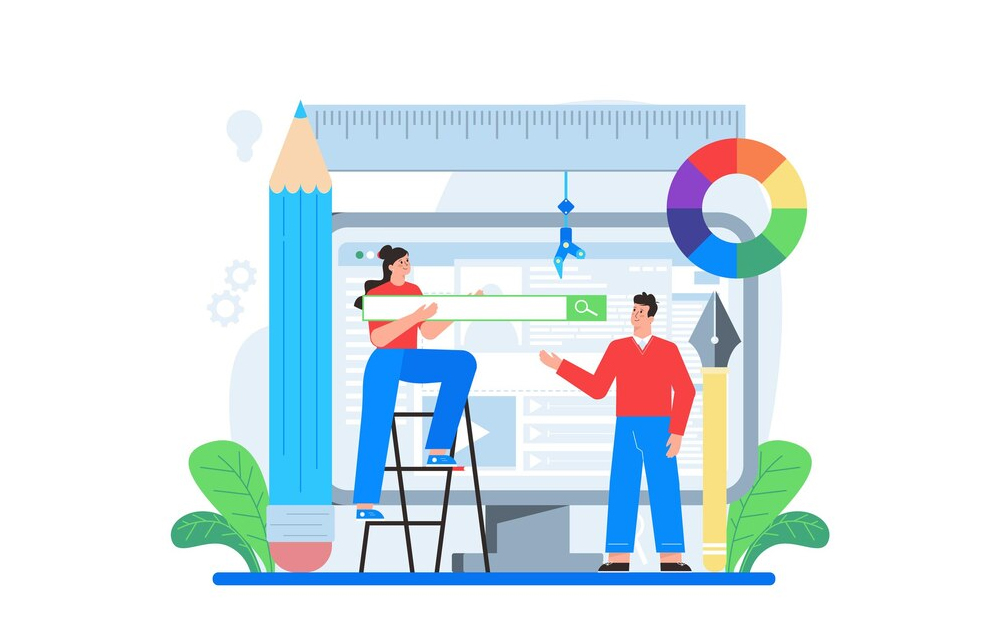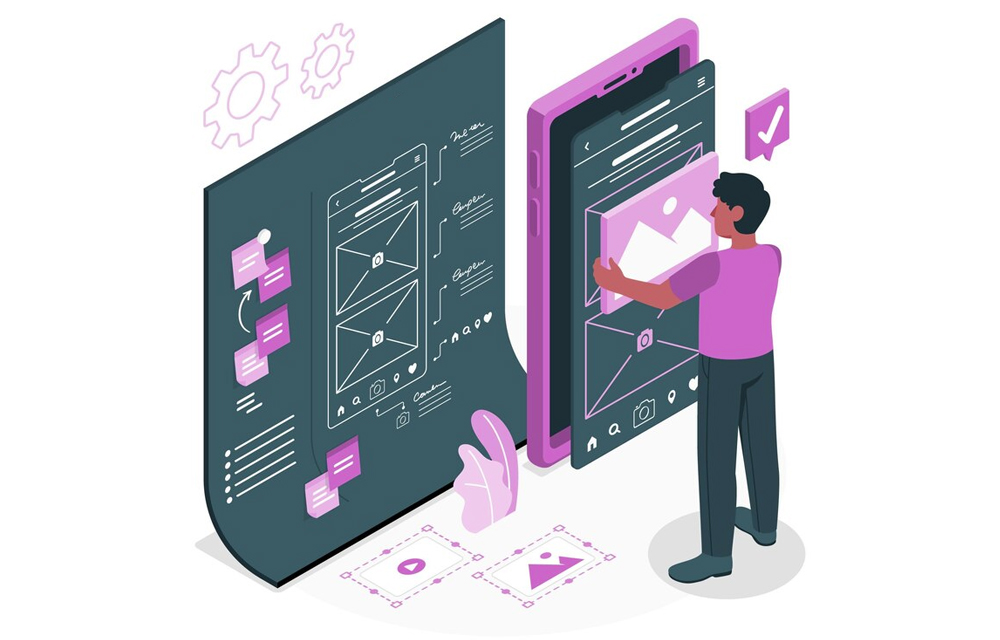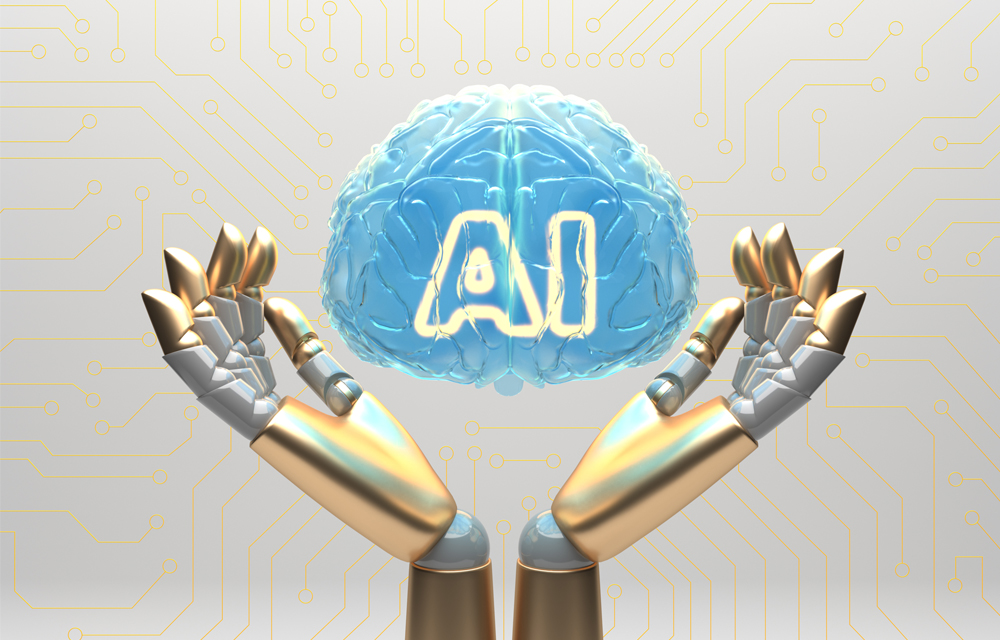According to a report by the McKinsey Global Institute, by 2030, up to 14% of administrative jobs could be aut...
Brickwork Blogs


User Interface (UI) design is a multifaceted discipline that blends art and science to create visually appealing, user-friendly, and functional digital interfaces. Whether designing a website, mobile application, or software, understanding the fundamentals of UI design is essential for crafting an experience that resonates with users. This comprehensive guide delves into the core principles, key components, and best practices that form the foundation of UI design.
Understanding UI Design
1. Definition and Purpose:
At its core, UI design is the art of creating interfaces for digital products that allow users to interact seamlessly with technology. The purpose of UI design is to enhance the user experience by making interfaces visually appealing, intuitive, and efficient.2. Importance of UI Design: In an era dominated by digital interactions, the importance of UI design cannot be overstated. A well-designed interface not only makes a product aesthetically pleasing but also contributes to usability, accessibility, and overall user satisfaction. Successful UI design leads to increased user engagement and loyalty.
3. Elements of UI Design:
UI design encompasses a range of elements, each playing a crucial role in shaping the user experience. These elements include but are not limited to:
Buttons and Interactive Elements: Elements that users click, tap, or interact with to perform actions.
Typography: The use of fonts and text layout to convey information clearly and aesthetically.
Color Palette: The selection and application of colors to create a visually appealing and cohesive design.
Icons and Imagery: Visual elements that represent actions, objects, or concepts.
Layout and Spacing: The arrangement of elements on a screen, including the use of white space for visual clarity.
Text Fields: Text fields allow users to input text or information. They should be appropriately labelled and have clear indications of their purpose. Error messages or hints can enhance user understanding.
Navigation Bars: Navigation bars help users move between different sections of an interface. Clear and well-organized navigation enhances the overall usability of the application or website.
Forms: Forms are used to collect user input, such as during account creation or data submission. Design forms with clarity, grouping related fields and providing helpful cues to facilitate easy completion.
Scrollbars and Pagination: For interfaces with content that extends beyond the initial view, scrollbars and pagination controls help users navigate smoothly through the information.
Feedback Elements: Feedback elements include messages, alerts, and notifications that inform users about the outcome of their actions. Positive feedback reinforces successful interactions, while error messages guide users in case of issues.
Principles of UI Design
1. Clarity and Simplicity:
One of the fundamental principles of UI design is clarity. The interface should be straightforward and easy to understand, minimizing confusion for users. Simplicity in design often leads to enhanced usability.
2. Consistency:
Consistency is key to creating a user-friendly interface. Elements such as buttons, icons, and navigation should behave and appear the same throughout the entire interface, establishing a sense of familiarity for users.
3. Feedback:
Providing feedback is essential for user engagement. Users should be informed of the results of their actions, whether it's clicking a button, submitting a form, or completing a task. Feedback can be visual, auditory, or haptic.
4. Flexibility:
A well-designed UI is flexible and adapts to different screen sizes, resolutions, and devices. This responsiveness ensures a consistent and enjoyable experience for users across various platforms.
5. Visual Hierarchy:
Visual hierarchy guides users through the interface by emphasizing important elements and organizing content in a way that helps users understand the relative importance of each piece of information.
6. User Control:
Empowering users with control over their interactions is crucial. UI design should allow users to navigate freely, customize settings, and easily undo or redo actions, fostering a sense of autonomy.
Components of UI Design
1. Typography:
Typography is a crucial component of UI design. The choice of fonts, font sizes, and spacing impacts the readability and visual appeal of the interface. Consistent and legible typography contributes to a cohesive design.
2. Color Palette:
Colors evoke emotions and convey meaning. The color palette chosen for a UI design should align with the brand identity and consider factors like accessibility and user preferences. A harmonious color scheme enhances the overall aesthetics.
3. Icons and Imagery:
Icons serve as visual cues, aiding in quick recognition and comprehension. Imagery, including photos and illustrations, can enhance the visual appeal of the interface and contribute to a positive user experience enhancing brands online presence.
4. Buttons and Interactive Elements:
Buttons and interactive elements are the building blocks of user interaction. They should be easily distinguishable, appropriately sized, and provide clear indications of their functionality. Consistency in design across buttons ensures a cohesive interface.
5. Layout and Grid Systems:
The layout of elements on a screen and the use of grid systems contribute to a visually balanced and organized interface. A well-defined layout helps guide users' attention and enhances the overall user experience.
Best Practices in UI Design
1. User Research:
Understanding the target audience is fundamental to effective UI design. Conducting user research helps identify user needs, preferences, and pain points, guiding the design process to create a solution that resonates with users.
2. Prototyping and Testing:
Prototyping allows designers to create interactive models of the interface before development. User testing of prototypes provides valuable insights into usability, identifying potential issues and refining the design based on user feedback.
3. Responsive Design:
With users accessing digital products on various devices, responsive design ensures that the UI adapts seamlessly to different screen sizes. This approach enhances accessibility and user experience across a range of devices.
4. Accessibility:
Designing with accessibility in mind ensures that digital products are usable by individuals with diverse abilities. This includes considerations for screen readers, color contrast, keyboard navigation, and adherence to accessibility standards.
5. Continuous Iteration:
UI design is an iterative process. Continuous evaluation, feedback, and refinement are essential to keep the interface aligned with user needs and evolving technology. Regularly updating the design based on user feedback contributes to a more user-centric product.
Emerging Trends in UI Design
1. Dark Mode:
Dark mode has gained popularity, providing users with an alternative color scheme that reduces eye strain in low-light environments. Designing interfaces with both light and dark mode options offers users flexibility and enhances the overall user experience.
2. Microinteractions:
Microinteractions are subtle animations or visual cues that provide feedback and enhance the overall user experience. These small details, such as button animations or loading indicators, contribute to a more engaging and interactive interface.
3. Data Visualization and Infographics:
Designers are emphasizing the importance of clear and engaging data visualization. Infographics and interactive charts help users understand complex information quickly and enhance the storytelling aspect of the user interface.
4. Variable Fonts:
Variable fonts allow for more flexibility in typography by incorporating multiple styles within a single font file. This trend enables designers to adjust font weight, width, and other characteristics dynamically, providing more creative freedom.
5. Minimalist Design:
Minimalism continues to be a prevailing trend in UI design. Stripping away unnecessary elements and focusing on essential components creates a clean and uncluttered interface, promoting clarity and simplicity.
Mastering the fundamentals of UI design is essential for creating digital interfaces that not only meet user needs but also exceed expectations. From the foundational principles of clarity and consistency to the incorporation of emerging trends like dark mode and 3D elements, a comprehensive understanding of UI design empowers designers to craft interfaces that are not only functional but also visually compelling and enjoyable to use. As technology continues to advance, staying attuned to user preferences, embracing new design paradigms, and maintaining a commitment to usability are key to creating UIs that stand the test of time.

How can Brickwork help you?
By leveraging the expertise of Brickwork, businesses can elevate their UI design, delivering a user-friendly and visually appealing experience that resonates with their target audience.
Ready to enhance your UI design and captivate your audience? Contact us now to start elevating your user experience with Brickwork's expertise. Add our services to your inquiry cart today!


